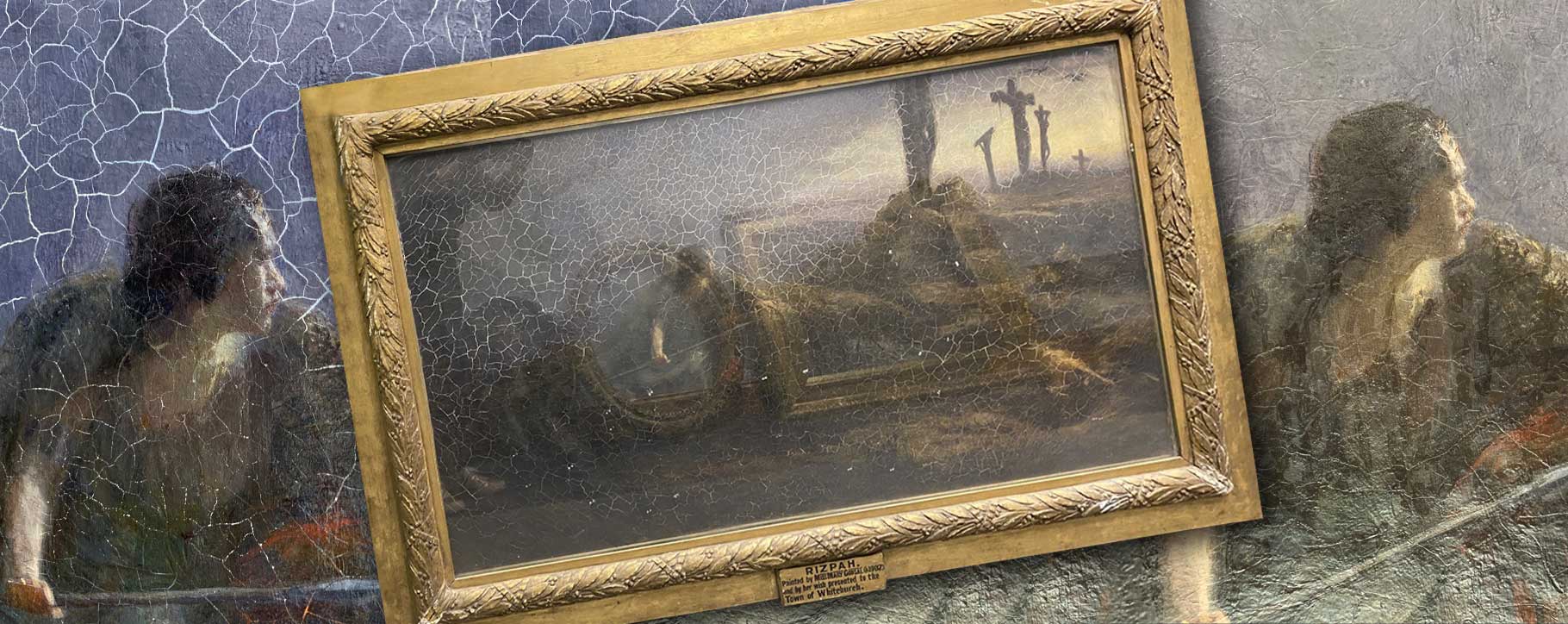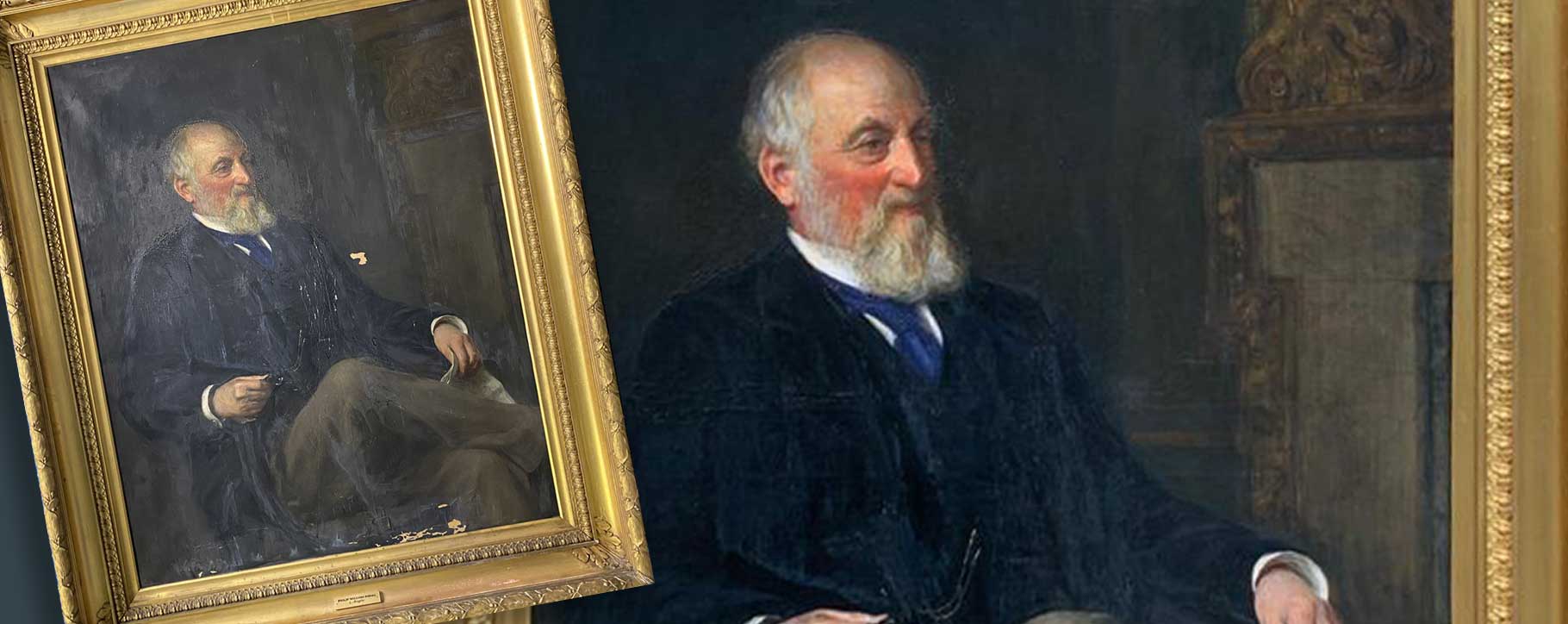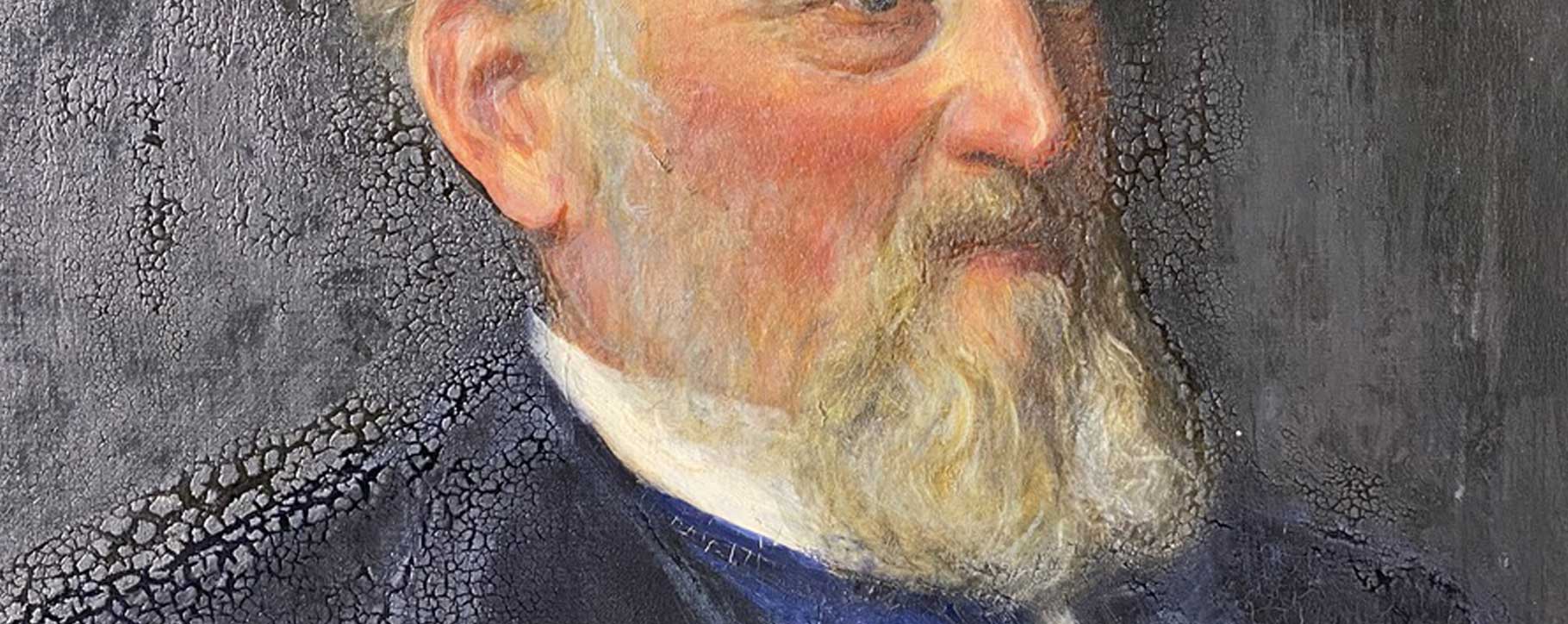Our team often has the chance to work on remarkable artworks, including those which are important to cultural heritage. When it comes to significant artwork which may be beneficial to the public, whether this is through their connection to an event, an important figure, or social history, conservation funding can be tapped into for restoration through a charity or foundation.
When applying for grants to restore an artwork or specialist item, various questions may be asked about their condition and how high risk they are, as well as the cost required for conservation work to be carried out. At Fine Art Restoration Company our team is happy to assess the piece and help provide the information which is required for the process to be completed in a timely manner. One such case was brought to us by a family who had applied for conservation funding from The Historic Houses Foundation, a group that aims to advance the preservation of buildings and artworks which are accessible to the public.
Iscoyd Park in North Wales has been home to the Godsal family since 1843. Both paintings which required restoration were connected to the family, one being a portrait of Philip William Godsal (1820-1896) from 1890, and the other a unique biblical scene painted by Mary Godsal (1848-1907) in 1896. Mary exhibited at the Royal Academy three times in the late 19th century. These pieces had been approved for conservation funding by the Historic Houses Foundation following a successful application, which included details and reports provided by our conservators at Fine Art Restoration Company.
Restoring ‘Rizpah’ by Mary Godsal

Mary Godsal’s 1896 oil painting on canvas depicts the tale of Rizpah, an Old Testament account of a mother who diligently guarded her sons following their crucifixion. She is a strong female figure who wields a spear to defend their bodies from creatures and birds of prey, watching over them for five months so that they may receive a proper burial. This ability to give the sons an honourable burial brought an end to a feud between warring groups.
The British rabbi Jonathan Magonet once noted that Rizpah represents “every mother who sees her sons killed before their time for reasons of state, be they in time of peace or in war. All that remains is for her to preserve the dignity of their memory and live on to bear witness and call to account the rulers of the world.” With this in mind, perhaps Mary Godsal’s choice of subject was a personal reflection on this sensitive subject. At the summer exhibition pieces were often selected if they had wider public interest, this may have been the case for those who viewed it with recent or ongoing conflicts in mind, such as the Anglo-Ashanti war of the same era.
This striking painting had an appearance that may have many owners casting doubt on whether restoration is possible, the deep and widespread cracks upon the surface gave it an unfortunate disturbance, detracting from the dark and poignant scene. The varnish of the piece was perishing, as well as attracting a build-up of dirt and contaminants. This had caused the painting to become dull, making dark areas difficult to make out without closer inspection. Luckily, our conservators are experienced with this type of damage, they were able to provide a detailed assessment and condition report which pointed to a successful restoration following a series of tailored treatments.

As well as being exhibited at the Royal Academy in 1896, the piece was then bequeathed to the Board of Guardians, Whitchurch, where Mary’s brother Philip Thomas Godsal was the chairman at the time of her death in 1907. It was displayed in the Board of Guardians dining room until the late 1920s, before being moved to the town hall and later the civic centre in 1982. At some stage in this public display, the oil painting was framed behind a glass barrier, likely due to its position in the civic centre which was behind a bar area. Whilst this may seem sensible in such an environment, a microclimate can emerge between the artwork and glass if it is not properly fitted or maintained. This likely compelled the damage further over a course of many years. The painting was returned to the family in 2010, following a re-organisation of the centre.
When ‘Rizpah’ finally arrived at our studio, our conservators began with a varnish removal to clear away this perishing layer and any contaminants. The cracking surface was then carefully consolidated with heat and weight treatment, this addressed the lifting of any areas which may have been at risk of falling away.
Once completed, our conservator then filled the cracked indents to provide a stable and even surface. New varnish was applied, which is non-yellowing and UV protective, followed by retouching of the filled areas with precisely colour-matched pigments. The re-touching of the painting is done above the varnish layer so that it is not confused with the original and can be removed in the distant future if further restoration work is required. It is also important for the ethics of conservation that no original area is irreversibly altered. This final process removes any visual disturbance to the artwork and allows it to be viewed as it was originally intended.
Restoring ‘Philip William Godsal’ by Lockhart Bogle
This Victorian piece depicts the son of Philip Lake Godsal, the first owner of Iscoyd Park who purchased the property in 1843. The artwork was officially designated as being of national, scientific, historic or artistic interest in 1986. Philip William Godsal was a philanthropist who believed his rural tenants should be allowed to farm their own smallholdings.

The portrait was painted at Iscoyd Park in 1890 by Lockhart Bogle, a tutor at The Herkomer Art School in Bushey, where Mary Godsal studied and the two became acquainted. Lockhart Bogle produced many portraits of prominent men from the era, including a portrait after Millais of Benjamin Disraeli which is in the National Portrait Gallery collection.
When the portrait came to our team, we immediately noticed various issues with the paint and perishing varnish layer, which was also clouded due to an effect of moisture damage known as ‘blanching’. The surface was cracking and flaking in a number of areas, it was clear that without professional intervention the artwork would begin to escalate with worrying levels of deterioration. Some areas had already faced the loss of the original paint, whilst others had raised in a texture similar to reptile skin. The portrait had lost the original tones under this build-up of problems, as well as the definition of original details on the surface. Additionally, it appeared to have met with water at some point, which had contributed to this overall instability.

Our conservators began with a process similar to that which was carried out on ‘Rizpah’, removing the old varnish and grime. This also took away the issues from a blanched varnish layer and cleared any build-up of historic debris which could have been harbouring acidic elements.
The paint layer was then consolidated around the flaking areas, adhering the weak points back to the canvas in order to prevent further losses. The areas of lost paint were again retouched with exact shades in order to achieve a seamless finish leaves no sign of visual disturbances. The areas of raised paint could not be removed, but they were able to be secured and stabilised against future decay and retouched where required to reduce any distraction.
Both artworks also had their frames assessed and restored by our specialist conservators to ensure that the newly protected paintings were being held in safe conditions. The portrait and ‘Rizpah’ were both returned to display at Iscoyd Park following their treatments; they will go on to be appreciated by the public and future generations of the Godsal family.
What do I need to consider when applying for conservation grants?
When we assisted the Godsal family with their application for conservation funding our team provided the following information to the Historic Houses Foundation:
- Professional recommendations from a fully qualified and experienced conservator
- Detailed costs for the proposed conservation work
- Credentials for our company and our conservators
- Sample of CVs of our conservators to demonstrate their experience
- An overview of the service Fine Art Restoration Company can provide
The application process for historic buildings will begin with a pre-application form so that the foundation can confirm that your project fits with their criteria, though this may not be required for a work of art. A response to this pre-application is usually given within 28 days. This will be followed by a site visit from 3-4 of their trustees who will decide whether you should make a full application for your building restoration project.
Applications for artwork restoration must be accompanied by as much information as possible, which in this case was provided by the Godsal family and our team at Fine Art Restoration Company. The trustees of the Historic Buildings Foundation will inspect this, as well as the conservation treatments that have been proposed. They will also require photographic evidence of the damage and information which supports the significance or provenance of the piece itself. Contact with a conservation team is key in making the project details as robust as possible, as well as helping you to fully understand which tasks may need to be undertaken to bring the artwork back to its original condition.
“The application process was very straightforward and made easier by the comprehensive report on the condition of the paintings, proposals for their restoration, and the excellent photographic record produced with the estimate from Fine Art Restoration Company.” – Philip Godsal
Some charitable trusts may require more or less information, depending on the type of work you are looking into, conservation funding value being sought and their application process. Our team is able to provide further information on restoration treatments and detailed condition reports for each artwork to help establish the requirements. We can also give advice on the type of artwork or item you are dealing with and which approach might be best when looking for a suitable or obtainable grant.
If you would like further information in relation to gathering details for conservation funding applications, please get in touch with our team to begin the process. Our knowledgeable staff will happily work with you to achieve a positive outcome for your artwork or specialist item, with support from our conservation team who will be ready to complete the work once your conservation funding has been approved.






